A New King is Crowned
HP’s new Z2 Tower G9 workstation reclaims the price/performance title.
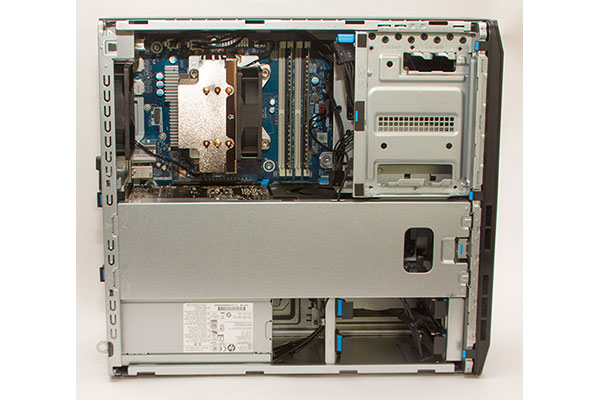
The interior of the toolless HP Z2 Tower G9 chassis provides ample expansion (Figure 2). Image courtesy of David Cohn.
Latest News
December 30, 2022
HP recently sent us the latest iteration of its Z2 Tower workstation, the Z2 Tower G9. The HP Z2—the company’s entry-level workstation aimed at power business users and professional creators using AutoCAD, SolidWorks and other CAD software—is also available in mini and small form factor versions.
HP bills the Z2 as “the world’s most powerful entry workstation.” When we reviewed the previous version (Digital Engineering February 2022), we concluded that it was entry level in name only, as the G8 version proved to be a great-performing workstation at an amazingly affordable price. The new version turned out to be even better, costing less than last year’s model, while delivering improved performance.
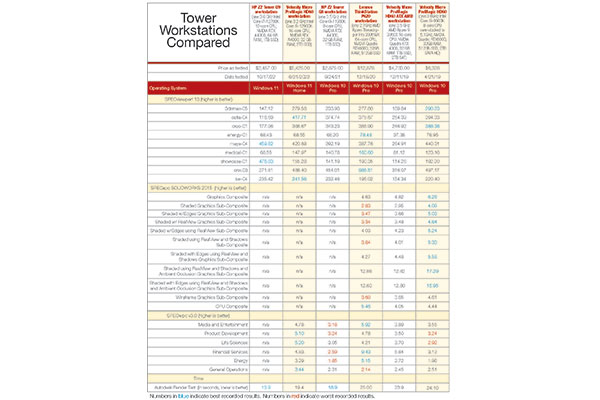
Outwardly, the new HP Z2 Tower G9 looks virtually identical to the G8. The system comes housed in the same charcoal gray case with a small HP logo and Z2 badge discretely centered at the top and bottom of the front panel, respectively. The size is also unchanged—6.68x15.5x14.12-in. (WxDxH)—and the system we received weighed just 15 lbs. The front panel includes a small power button, a universal audio jack, four USB Type-A ports and space for an optional USB Type-C port ($14) and an SD card reader ($19). These are flanked by a pair of accessible drive bays, while the lower half of the front panel consists of a perforated screen hiding the air intake.
The rear of the case is also the same, with a pair of audio jacks, six more USB Type-A ports and an RJ-45 jack for the integrated gigabit LAN. There are also two DisplayPorts that connect directly to the integrated Intel graphics, although these are disabled by default when a discrete graphics card is installed. A recess near the top serves as a handle to move the computer.
Lots of Options
As expected, HP’s toolless chassis makes it extremely easy to access the very well-organized interior. While the mechanism for removing the side panel has changed—the G9 includes an optional system that detects if someone has tried to open the case—once opened, the interior also looks identical to the G8.
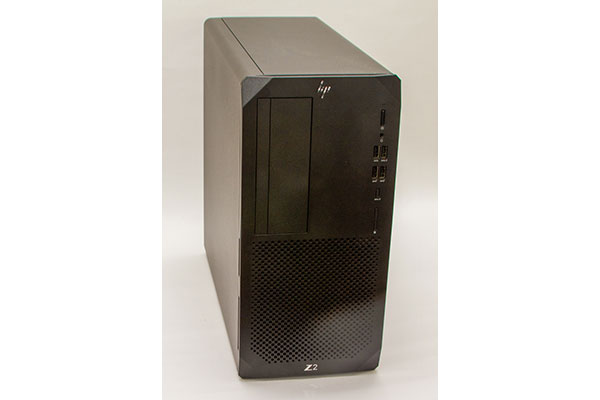
Fig. 1: The new HP Z2 Tower G9 workstation is virtually identical to the previous generation. Image courtesy of David Cohn.
The upper front section of the chassis includes a removable cage for the two front-panel drive bays, while the lower front portion consists of a fixed internal drive cage that can host two additional internal drives. Separating this, a metal stiffener spans the depth of the case. Removing the stiffener reveals four PCIe expansion slots: two PCIe x16 slots and two PCIe x4 slots.
Unlike last year’s G8 system, however, there was no additional cooling fan mounted to the stiffener, although mounting cutouts remain. In the upper rear portion of the case, a large phase change heat sink with its own fan covers the CPU, with four adjacent unbuffered dual in-line memory module (UDIMM) memory sockets easily accessible. The power supply is positioned in the lower rear portion of the case.
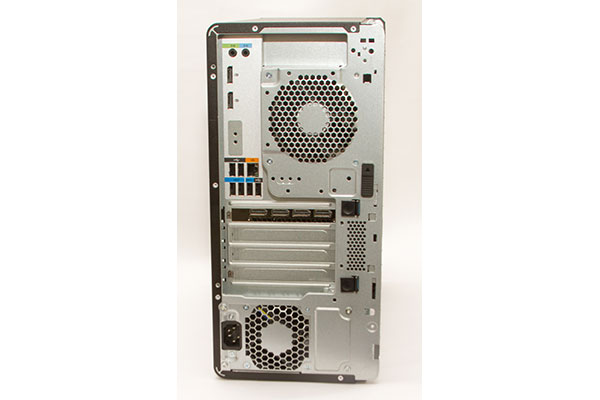
The HP Z2 Tower G9 workstation supports up to 128GB of RAM, using 32GB memory modules. It also offers three M.2 storage slots and up to 48TB of storage. At $1,004, the base configuration comes with a 2.5GHz 6-core Intel Core i5-12400 CPU with integrated Intel UHD graphics, 16GB of RAM, a 256GB M.2 SSD and a 350-watt power supply, with Windows 11 Pro pre-installed. The addition of a discrete graphics processing unit (GPU) and more powerful CPU require a higher-capacity power supply; our evaluation unit came with a 700-watt power supply unit, which added $74.
HP offers a choice of 10 Intel 12th generation CPUs, ranging from a Core i3-12100 (3.4GHz, four-cores) to the Core i9-12900K (3.2GHz 16-cores). Our evaluation unit came with an Intel Core i7-12700K Alder Lake processor (the K designation means the CPU can be overclocked), which increased the base price by $459.
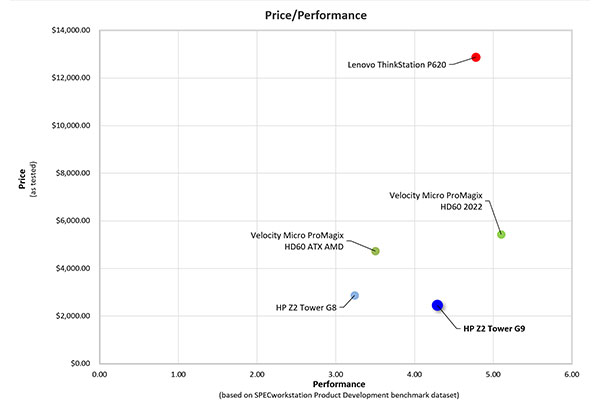
Fig. 4: Price/Performance chart based on SPECwpc Product Development benchmark dataset. Click here for full-size chart.
That 12-core CPU provides eight performance cores (P-cores) with a base frequency of 3.6 GHz and four efficient cores (E-cores) with a 2.7 GHz base frequency, for a total of 20 threads.
Performance cores are larger, high-performance cores designed for raw speed while efficient cores are smaller, with multiple E-cores fitting into the physical space occupied by one P-core. The performance cores have a maximum turbo boost of 4.9 GHz, while the E-cores have a maximum turbo speed of 3.8 GHz. Total maximum CPU speed is 5.0 GHz using Intel Turbo Boost Max Technology 3.0. Based on the latest Intel 7 lithography, the CPU has a 25MB Intel Smart Cache, a processor base power of 125 watts and a maximum turbo power of 190 watts.
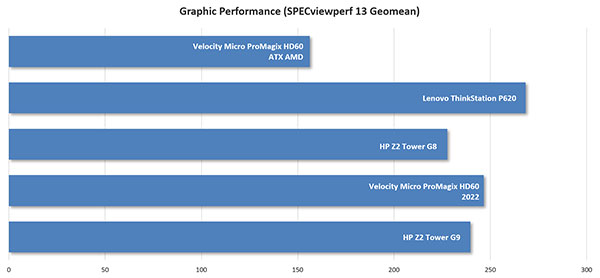
Though Intel is no longer focusing on Xeon, error-correcting code (ECC) memory is now available for most of the 12th-generation CPUs offered on the HP Z2 Tower G9. Our system included 64 GB of DDR5-4800MHz standard memory, installed as a pair of 32GB UDIMMs, adding $820 to the price.
Storage options include solid-state drives (SSD) ranging from 256GB to 4TB, as well as 2.5-in. hard drives from 500GB to 12TB, and redundant array of independent disks (RAID) arrays are supported. Our evaluation unit came with a single 1TB PCIe M.2 SSD, for an additional $365.
HP also offers a choice of discrete GPUs from AMD and NVIDIA, and the Z2 Tower G9 supports up to two GPUs. The system we received included an NVIDIA RTX A4000, installed in one of the PCIe x16 slots. This virtual reality-ready GPU, based on NVIDIA’s GA104 graphics processor, comes with 16GB of GDDR6 ECC memory and features 6144 compute unified device architecture (CUDA) cores, 192 Tensor cores and 48 RT (raytracing) cores. Its 256-bit interface yields a bandwidth of 448 GB/second while consuming 140 watts. Although it is a single-slot card, it does require additional power via a six-pin auxiliary connection. The RTX A4000 provides four DisplayPorts, which added $1,188.
Award-Winning Performance
As usual, we put the new HP Z2 Tower G9 through our standard battery of benchmarks. But since the workstation came with the Windows 11 Pro operating system pre-installed, we were unable to run the complete set of benchmarks.
On the SPECviewperf benchmark, which focuses on graphic performance (and is officially supported under Windows 11), the HP Z2 Tower G9 delivered top scores on several of the datasets and was near the top on the others.
Because the SPEC workstation performance benchmark is not yet officially supported under Windows 11, the system was unable to complete some of the tests in this very demanding benchmark. It did score quite well on those portions of the benchmark that could be completed, including the Product Development workload, on which we base our price/performance calculations.
On our AutoCAD rendering test, which clearly shows the advantage of fast CPUs with multiple cores, the HP Z2 Tower G9 averaged 15.9 seconds, the best result we have ever recorded.
Throughout our tests, the HP Z2 Tower G9 remained cool and quiet, with fan noise barely ever audible over the ambient background sound level. HP rounded things out with a 109-key USB keyboard and USB three-button mouse. The keyboard proved to be the only element of this system we did not like, due to its terrible feel, with extremely short key travel and tiny function keys.
Although Windows 11 Pro comes preloaded, customers can opt for Windows 10 Pro as a $2 downgrade. Linux is also available. Like other HP professional Z-series workstations, the HP Z2 Tower G9 is independent software vendor-certified for professional applications from Ansys, Autodesk, Dassault Systèmes, PTC, Siemens and others. The system is also backed by a three-year warranty (with extended support options available).
As tested, our evaluation unit priced out at $2,457, making this a great-performing workstation at an amazingly affordable price. In our opinion, the HP Z2 Tower G9 claims the title as the new price/performance leader and should meet the needs of a majority of DE readers.
More Hewlett Packard Coverage
Subscribe to our FREE magazine, FREE email newsletters or both!
Latest News
About the Author
David Cohn is a consultant and technical writer based in Bellingham, WA, and has been benchmarking PCs since 1984. He is a Contributing Editor to Digital Engineering, the former senior content manager at 4D Technologies, and the author of more than a dozen books. Email at [email protected] or visit his website at www.dscohn.com.
Follow DE





